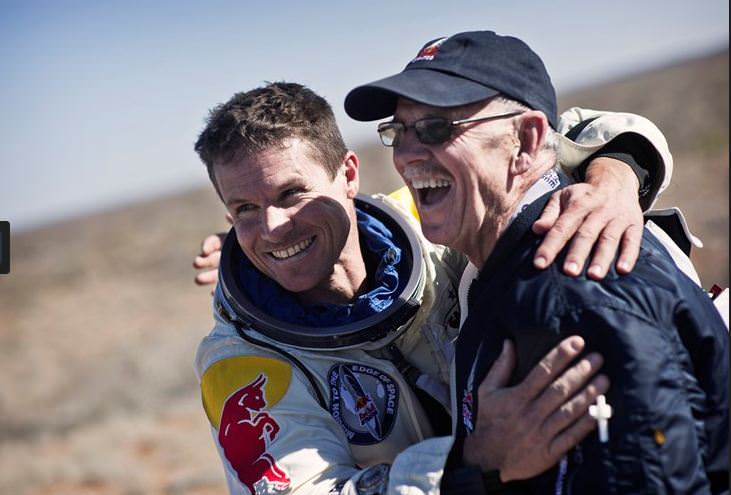Just a little over two years since Felix Baumgartner broke USAF Colonel Joseph Kittinger’s stratospheric jump record, Alan Eustace from Google has independently smashed the high altitude skydiving record again. This brings home to Silicon Valley a record that might stand for a while. Eustace took a minimalist approach to the jump. His setup involved a helium filled balloon and just him hanging from the balloon in a spacesuit. Pure and simple, this permitted his system to reach 135,890 feet above the Earth, over 41 kilometers altitude, exceeding Baumgartner’s record by 7000 feet.
The simple design of his balloon launch might remind one of a bungy jump. This one maxed out at 822 mph and created a sonic boom. How can anyone break his record now? Can someone rise to a higher altitude? What is next for the Google high flyers? Will Baumgartner take this as a challenge to retake the record?
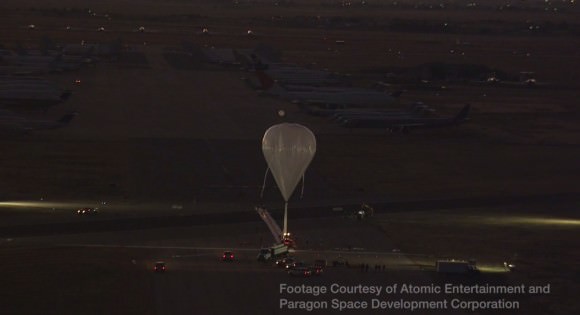
The 57 year old Alan Eustace is a Senior Vice President at Google in its Knowledge department. He is a licensed pilot but not known for undertaking extraordinary feats of daredevil. Eustace grew up in Florida and recalls that his childhood was filled with trips to Cape Canaveral for NASA launches. Not a spur of the moment undertaking, Eustace had dreamt of accomplishing this feat and record for some time.
This is the third successful balloon skydiving jump from over 100,000 feet. All three have been accomplished from Roswell, New Mexico. Kittinger’s was in 1961, Baumgartner in 2012, and now Eustace in 2014. A fourth jump was undertaken in 1966 from a height of 123,000 feet but ended in failure and the death of the skydiver, Nicholas Piantanida.
The trip to the upper heights of the atmosphere took two hours. All this time he was forced to hang very still to avoid over-heating. His spacesuit had minimal ability to cool his body during the ascent. While the stratosphere reaches temperatures of 100 below zero, the atmosphere is exceedingly thin and body heat has no way to radiate away.
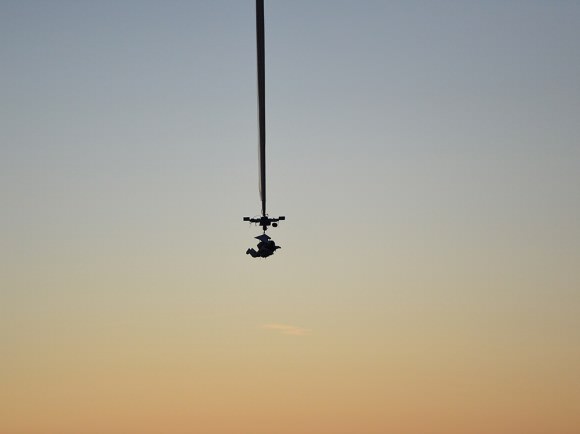
Without a capsule like Baumgartner and Kittinger before him, he relied solely on a spacesuit custom built by Paragon Space Development Corporation, a designer of life support devices. The simple design exceeded Baumgartner by over 7000 feet, nearly a mile and a half more. Eustace’s new record is approaching the maximum that has ever been achieved by any lighter than air craft, manned or unmanned.
The unmanned high altitude record for balloon flight was set in 2002 from Sanriku Balloon Center at Ofunato City, Iwate in Japan. This record stands at 173,900 feet. So there is plenty of room for record breaking but it will require pushing the limits of technology. In this day and age, there are many keen to push technological limits.
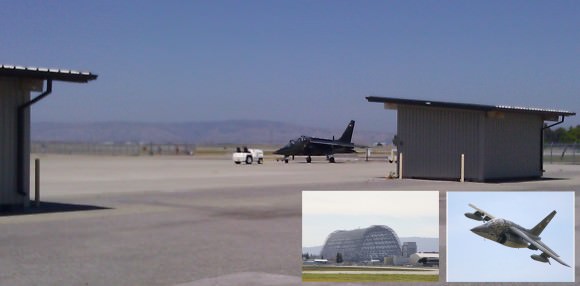
Google execs are no strangers to high flying. At Moffett Field in Mountain View, California, just a couple of miles from executive headquarters of Google, a small group of executives utilize a German made Dornier Alpha jet. Collaboratively with NASA Ames, the jet is flown by the execs and other experienced pilots to study the upper atmosphere and quite possibly to take in the views around the San Francisco bay area. They are often seen making touch n’ go’s at Moffett to maintain skills and certification. Google, the corporation, clearly showed its interest in space applications with the purchase of Skybox, a microsatellite builder, in June of this year for a reported $500 million.
Reference:

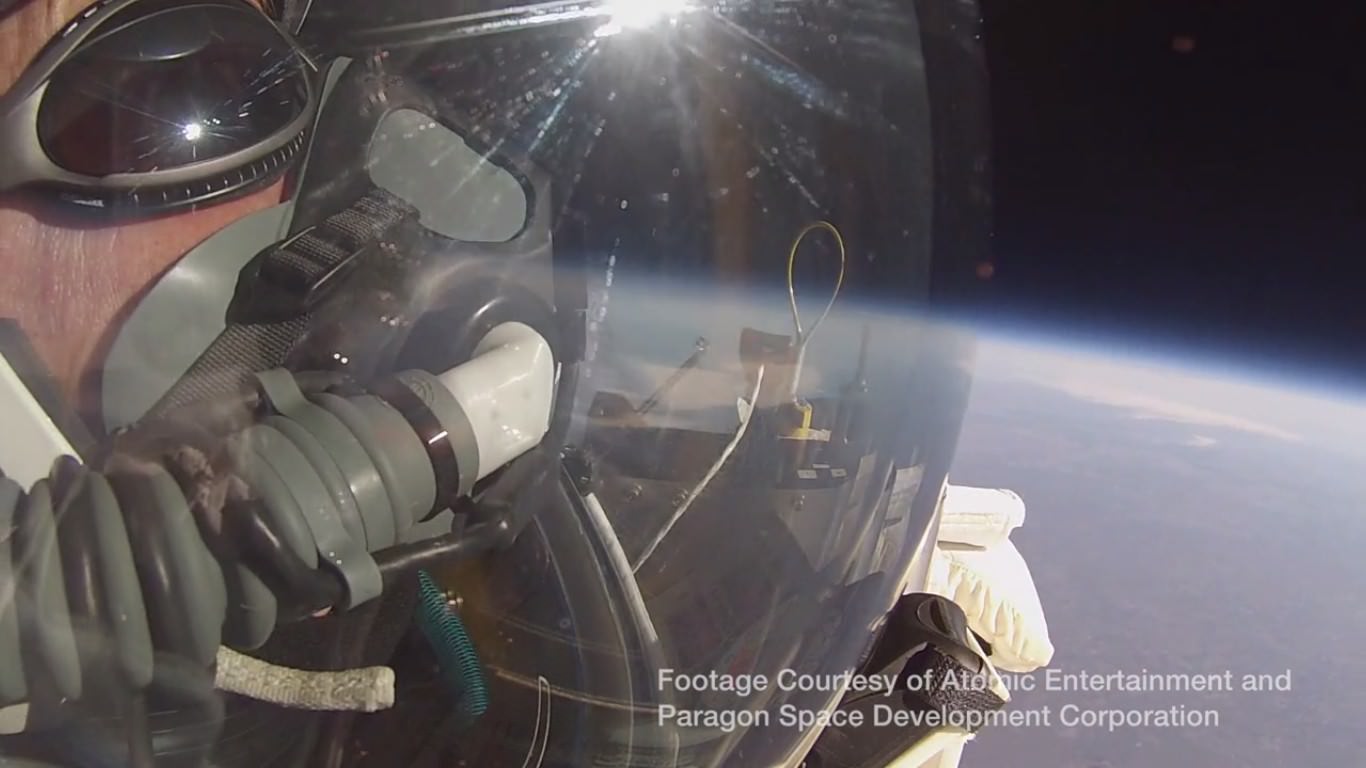

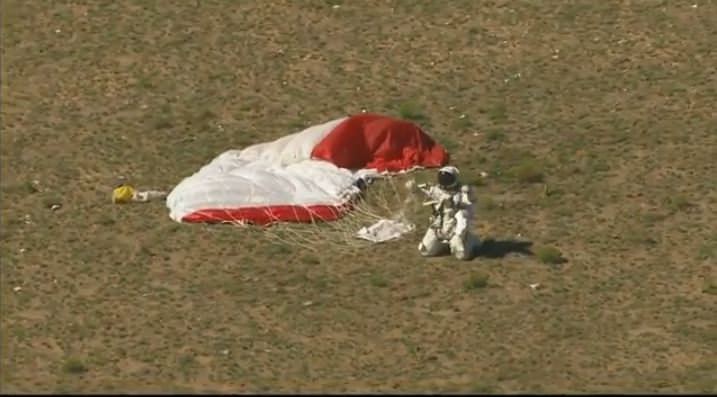
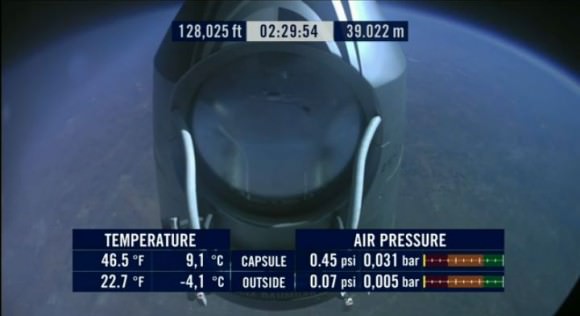
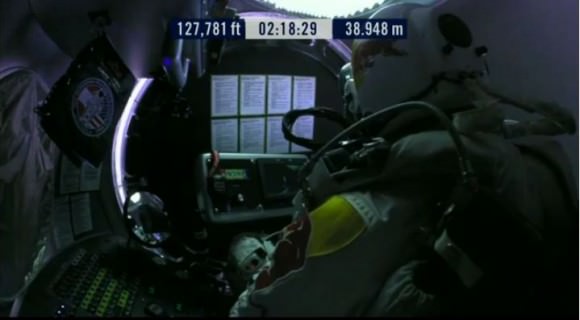
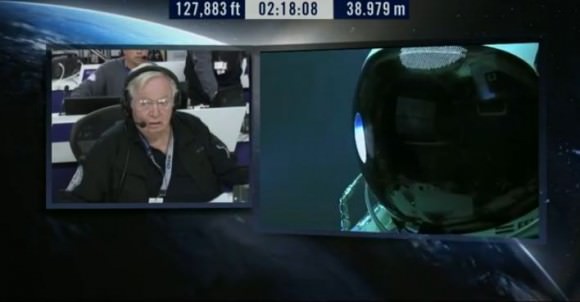
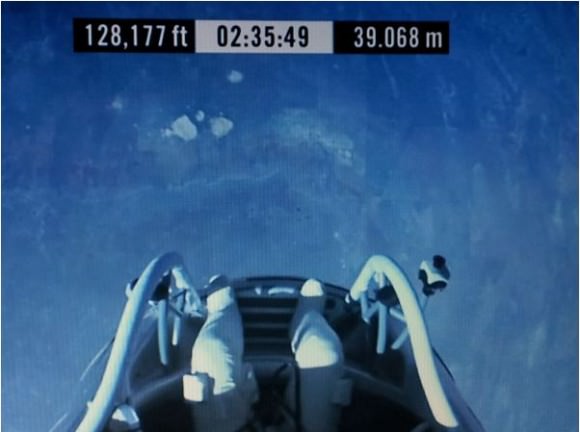
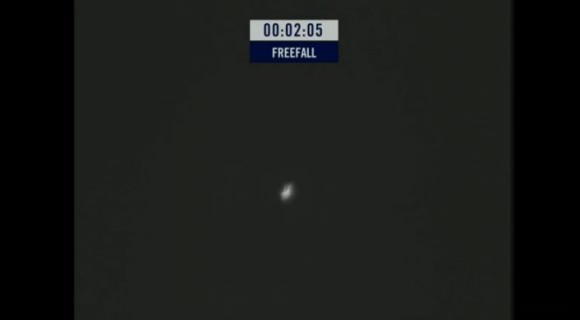
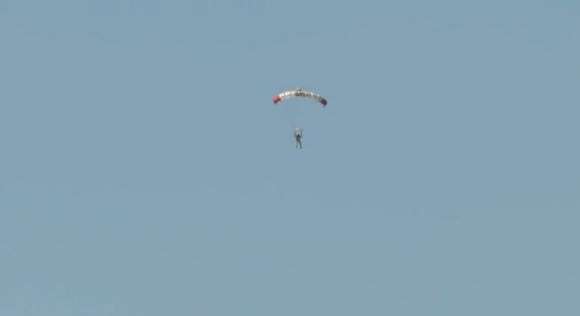
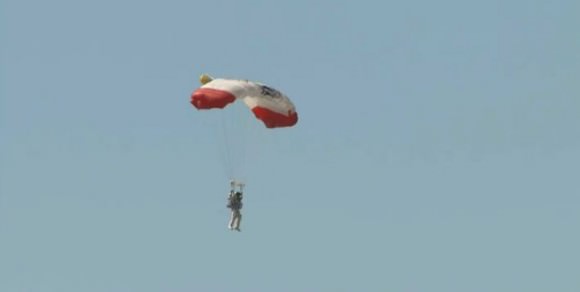
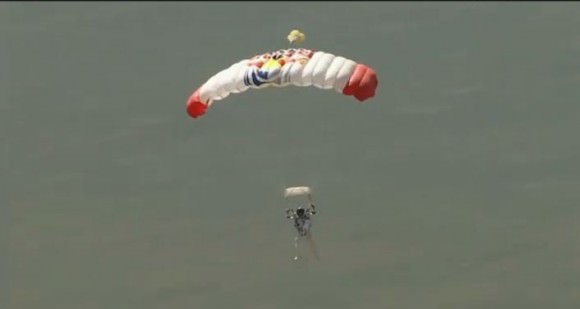

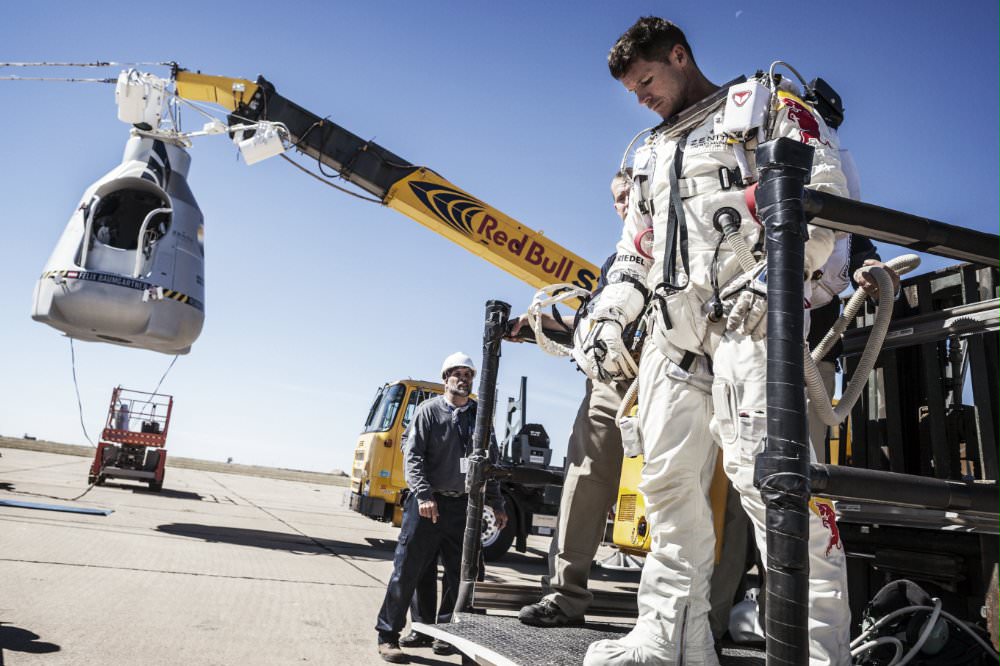
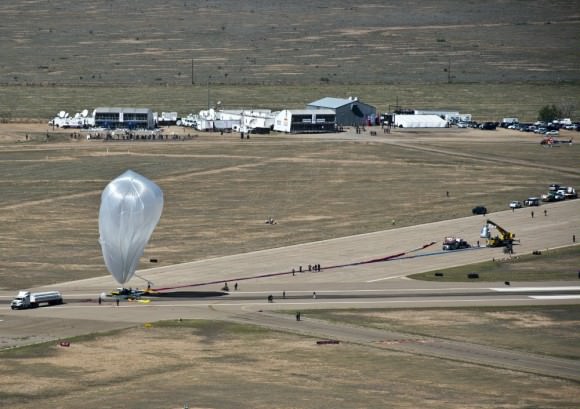
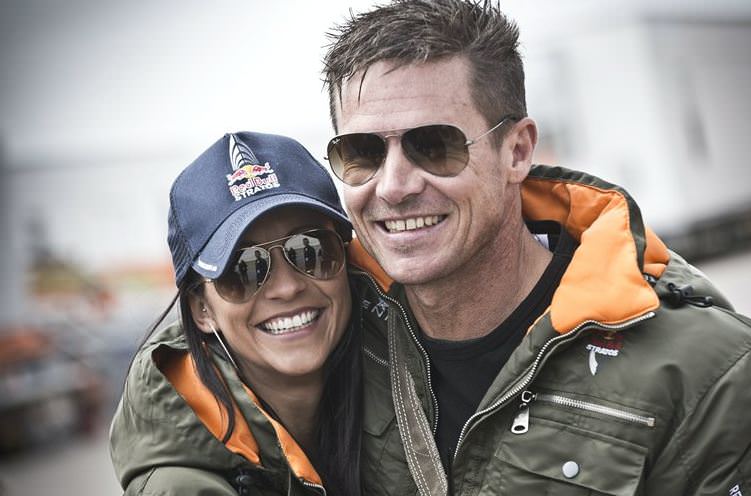
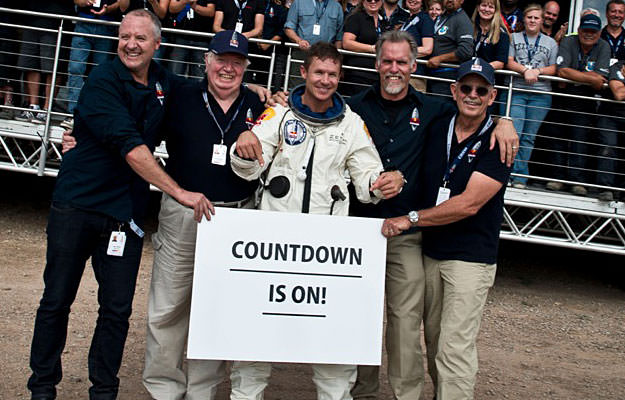
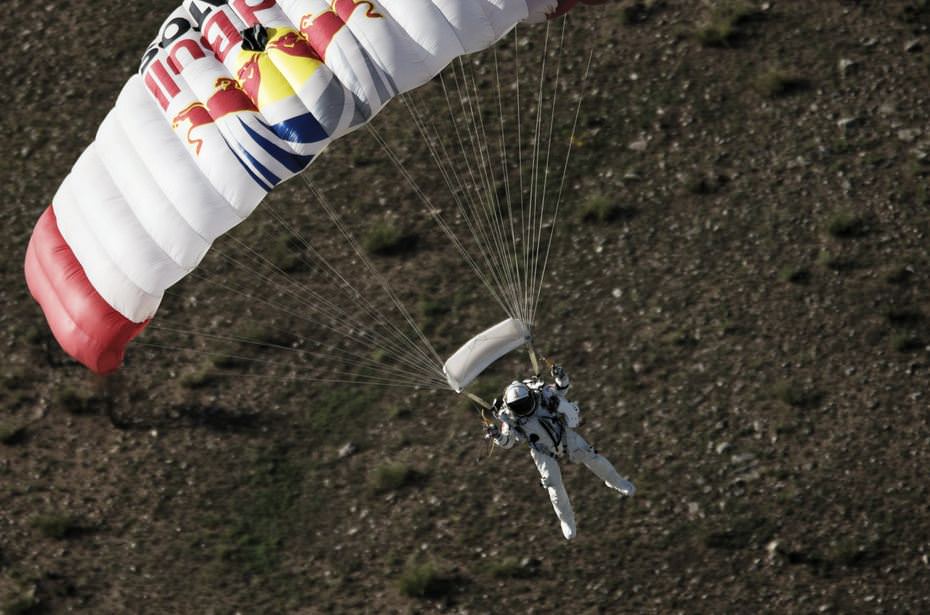
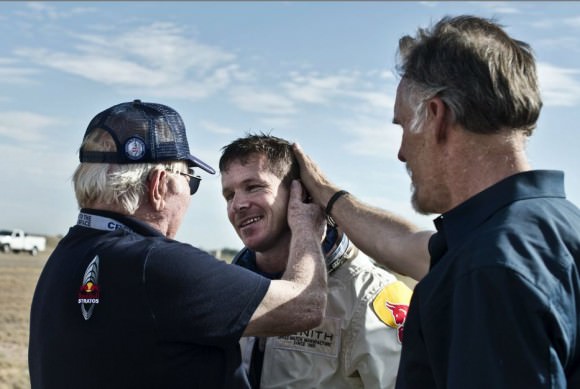 Caption: Technical Project Director Art Thompson and Capcom 1 USAF Col Joe Kittinger of the United States welcome Pilot Felix Baumgartner of Austria during the second manned test flight for Red Bull Stratos in Roswell, New Mexico, USA on July 25, 2012. Credit: Red Bull Stratos.
Caption: Technical Project Director Art Thompson and Capcom 1 USAF Col Joe Kittinger of the United States welcome Pilot Felix Baumgartner of Austria during the second manned test flight for Red Bull Stratos in Roswell, New Mexico, USA on July 25, 2012. Credit: Red Bull Stratos.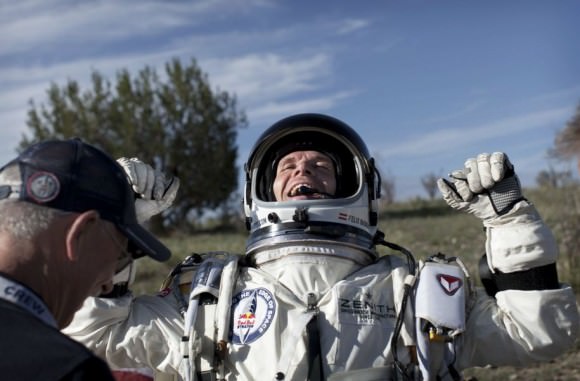 Caption: Pilot Felix Baumgartner of Austria celebrates after he lands at the desert during the second manned test flight for Red Bull Stratos. Credit: Red Bull Stratos.
Caption: Pilot Felix Baumgartner of Austria celebrates after he lands at the desert during the second manned test flight for Red Bull Stratos. Credit: Red Bull Stratos. 